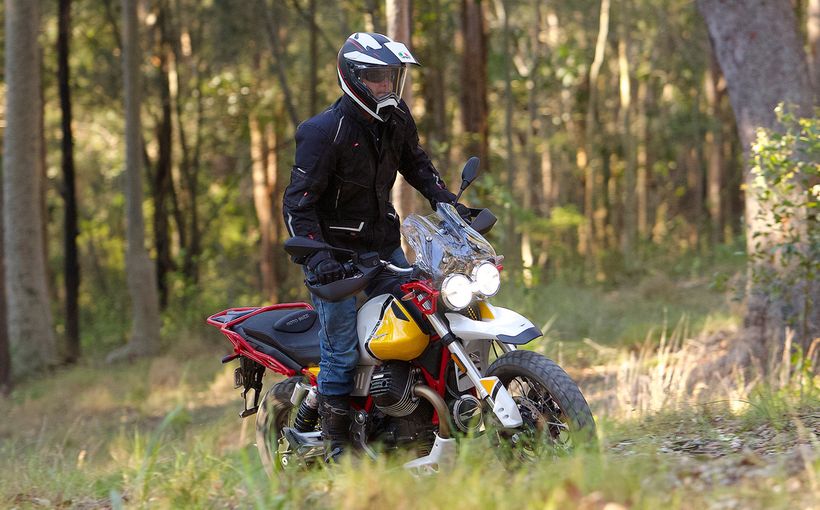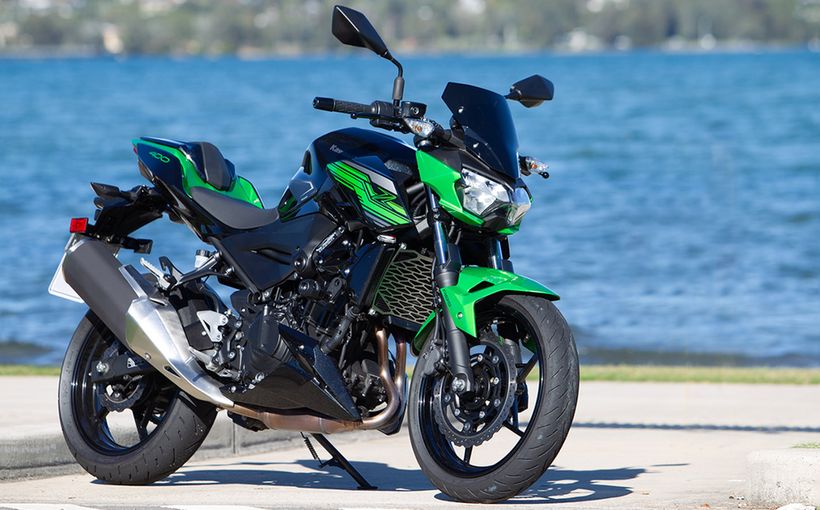Harley-Davidson Softail S-Series: Grooving with Fat Boy Slim

STORY: MICK MATHESON PHOTOS: LOU MARTIN
Here is the future wrapped up in the past — which is Harley-Davidson all over, really. The engine is the future: for the first time, H-D’s 110ci engine has been allocated to mainstream models and surely it’ll roll out across the board in the coming few years. The models in question are the past: the 1940s-style Slim, which you can have in a paint scheme that was a world-wide hit during that decade; and the famous Fat Boy, arguably Harley’s most significant model of the past 25 years and a bike that still hints at war-ending atomic bombs and America’s prosperity in the years after.
And yet for all the meaning you can read into the debut of the Softail S-Series models, everything boils down to simple riding pleasure. The big-engined Slim S and Fat Boy S are humble cruisers that don’t promise a lot but deliver in spades.

It’d been a long time since I rode a Fat Boy. Not since the end of the Evo era, in fact, when the Twin Cam engine came along. Not much has changed, the only obvious thing being that some of the machine has grown bigger. After taking the step from 82 to 88 cubic inches, the engine stepped up again to 96, 103 and now 110ci — that is, all the way from 1340cc to 1801cc since 1990. The body is a bit fatter too, but the wheels say it best: you’ve got a 140-section tyre bulging on the front wheel and a 200-section tyre on the rear. No skinny tyre tracks here. The guards are wide to suit, and it means the pillion pad is also a fairly generous thing. Yes, this bike lives up to its name.
So does the Slim, in a relative way. We’re not talking Ducati Streetfighter slim. Not even Harley Sportster slim. This is slenderness as only Big Twins could define it, but it’s amazing what a difference smaller tyres can make, especially when their mudguards shrink with them. The Slim wears mere 130- and 140-section tyres front and rear, respectively, on 16-inch wheels. Those wheels look lighter, too, being wire spoked instead of nearly solid like the Fat Boy’s. Comparing Fat Boy to Slim, it looks like Harley amputated the chunky pillion seat and performed extreme liposuction on the rider’s saddle. The bobbed guards are the only other thing worth noting.

Personally, I like the Slim S. Solo seating, retro looks, no ostentation, just the basics. But I don’t know if it likes me. It inflicts pain, but that’s probably because I try to make it do what it wasn’t really built to do: travel. I mean, the seat’s got no padding to speak of at all, and like all Softails the suspension isn’t exactly your usual long-travel, plush touring kind. You tend to cop a few jolts in the lower back, though for me the slightly hunched riding position eventually puts more strain on the muscles down there than the odd pothole. I am prepared to suffer this, though, because I appreciate what the Slim represents as a no-frills motorcycle and I reckon it’s just fun.

Of the two S-bikes, the Slim is the most agile and responsive. It’s 12kg lighter, but both bikes weigh more than 300kg so weight’s not the key separator here. It’s the wheel and tyre sizes that do the trick, nothing else. The steering is lighter and more direct, and the mood is more upbeat as a result. It’s more fun on a winding road and easier in the city. The Fat Boy, in contrast, asks for more input before rolling off its centre line and turning with grace into a corner. It is as stable as America’s conservatism.
However, these are not vastly different bikes, their Softail DNA keeping them close. There are small variations: the Slim’s seat height is 20mm lower; its clearance is 115mm instead of the Fat Boy’s 125mm; it leans only 24 degrees to the right, while the Fat Boy goes 25.6 degrees before its exhaust touches down; lean angles are almost identical on the left. And you’d think the engines would be the same, but no. All 110ci motors are not created equal. Harley’s figures show the Slim makes more torque at fewer revs: 148Nm at 3500rpm against the Fat Boy’s 146Nm at 4000rpm. That points to different peak power outputs, both in quality and when you get there. The torque figures and the Fat Boy’s high- performance, free-breathing air intake imply better top-end grunt, but jumping between the two bikes I inferred no great variation.

More importantly, there’s definitely more power everywhere than there is in the 103ci Fat Boy and Slim. The improvement won’t set the rear tyre alight as you smoke it away from the line, but your mate on the non-S model had better be good on the gas if he’s going to stay level with you. He’ll also be busier with his left boot when you’re cruising around because the 110 motor’s beefier mid-range torque gives top gear the extra shove it has needed ever since the six-speed transmission was introduced. Since before then, even.
The gear ratios have not changed for the S models, and so you still lope along at about 2300rpm on 100km/h in sixth, the engine ticking over so slowly it feels like it’s hardly putting any effort into it at all. But when you wind it on you know its muscles have just been keeping warm while they wait for this moment. Without fuss or urgency, they work harder to make you surge past that slow car or maintain your pace up a steep hill. You’ll still kick it down a couple of gears when you really want acceleration — sometimes all the way back to third on slower roads — but one of the 110 engine’s greatest attractions is its endowment of properly relaxed top-gear cruising performance in these Softails. That alone is worth the entry price.

Or is it? The Slim S and Fat Boy S cost $2500 and $2245 more than their respective non-S equivalents. There are two ways to look at the value. First, buying an S is a hell of a lot cheaper than upgrading a standard 103ci model with all the Screamin’ Eagle performance parts you’d need to build your own 110ci bike. Or, second, you can forego the frivolity of the extra power and save your money, knowing the 103ci engine has perfectly good everyday performance anyway. Your choice, I guess.
And when making that choice, you have to factor in the aesthetics. The S-models are blackened bikes. H-D’s stylists killed off most of the chrome, replacing it with black. Exhausts, engine covers, rocker covers, forks, instrument consoles, handlebars, levers — almost everything. It finishes the Slim the way it always should have been. It cures the Fat Boy of its addiction to bling. I’d pay money for that. Of course, many cruiser owners don’t see an addiction to bling as a problem, and I suspect many Fat Boy S buyers will want to push their bikes off the wagon again.

Colour options are short by Harley-Davidson’s standards. Each S-bike comes is two colours, one of which is Vivid Black, or glossy black to you and me. The Fat Boy S also comes in matte black, and the Slim S’s second colour is Olive Denim complete with US Army white star on the tank. It’s the hog that General George S Patton would ride if he were alive today, replete with pearl- handled revolvers on each hip. ”Lead me, follow me, or get out of my way,” he might growl.
His Harley wouldn’t bark like a pair of six shooters, but careful attention to engineering and tuning has permitted the release of some of the big engine’s exhaust note without falling foul of noise laws. If the wind noise is filtered out well enough by your helmet you can hear the muffled rumble of the Harleys as you ride the highways, and at lower speeds they’re easily audible. Like the calmed vibrations of the rubber-mounted powerplant, there’s just enough there to remind you you’re on a machine with fire and movement happening deep inside it.

Suspension, braking, gearbox action and most of the details are just like on the 103ci Softails, meaning the ABS-equipped brakes are good, the clutch is smooth and not overly heavy, the gearbox is chunky and positive, and the suspension is happiest when both you and the road are smooth. Within the limits of their clearance, Softails can be ridden hard, but push them without sympathy and the suspension fights back. They can also be very comfortable, but Aussie roads tend to challenge their springs and find their bump stops. Fuel economy is also quite like the 103’s. Consumption sits around 5.3L/100km when you’re tooling around in cruise mode with the odd burst of excitement thrown in. A patient person might keep it just under 5.0 on a stretch, but some well- directed impatience will push it beyond 6.0.
Nothing suffers for the switch to a bigger, more powerful engine. The Slim and Fat Boy adapt readily to life with a 110ci unit. It bodes well for the future of the Softail range, assuming they’ll all soon step up the same. Makes us wonder how the CVOs will respond, but that’s potentially a very big question. Meanwhile, if you can’t wait to get a 110 without spending CVO money, grab one of these S-Series bikes. They’re as cool as ever a Softail was but with a lot more fun-filled grunt.
2016 SOFTAIL UPDATES
The Slim S and Fat Boy S not only get a boost from the big V-twin, they lead with changes that have been brought in across the Softail range for 2016. They both have cruise control as a standard item, along with ABS brakes and Harley’s anti-theft system.
The cruise control is smooth, very easy to use and a worthwhile addition. ABS is a no brainer, I reckon. As for the security system, if you can stand the constant chirping and flashing every time you turn off the bike, you’ll appreciate its presence, but it drives me nuts.
The Softails all have a fly-by-wire throttle system to accommodate the cruise control system, and it feels well calibrated. Not all Softails have cruise control included in the package, though. It’s stock in the S-Series, Heritage and Deluxe, but you’ll have to buy it as a dealer-fitted accessory if you have a Breakout, a Fat Boy Lo or a 103ci Fat Boy or Slim.
And speaking of the 103 engine, all of the 103B Softail versions are now so-called High Output units, tuned for greater bottom-end response.











